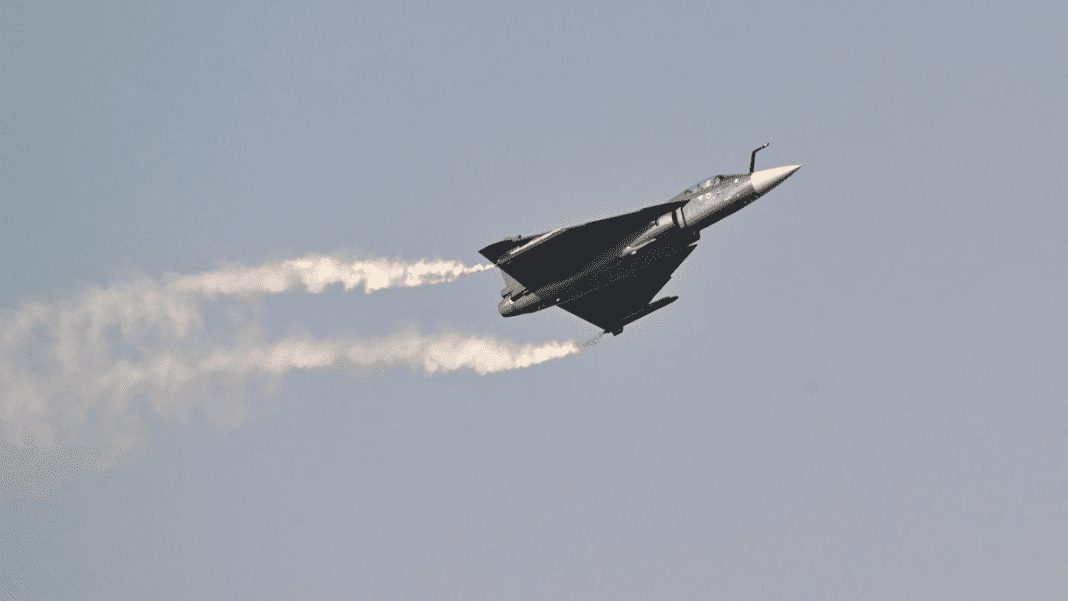Airshows attract huge crowds eager to watch fast jets perform sharp turns, steep climbs and daring stunts, but these displays can become dangerous in seconds. The recent HAL Tejas crash at the Dubai Air Show 2025 reminded many people of past airshow accidents worldwide, where advanced fighter jets like the F-16, MiG-23 and Su-27 have also gone down during demonstrations, rehearsals or display flights.
Deadly Accidents During Airshow
Airshows often push aircraft to their limits. Pilots fly very close to the ground and perform quick moves that require perfect timing. Even a small error, mechanical fault or unexpected change in flight behaviour can lead to a crash.
One major incident happened at the Radom Air Show 2025 in Poland. A Polish Air Force F-16 Fighting Falcon was practising for the show in August 2025. During a low-altitude aerobatic manoeuvre, the jet crashed. The pilot did not survive, and the organisers cancelled the display. The crash shocked aviation fans because the F-16 is known for its advanced technology and strong safety record.
Baku ignites geopolitical buzz — China’s HQ-9 missile takes center stage in Azerbaijan’s arsenal
Another well-known case involved the MiG-23UB, which went down at an airshow in Ypsilanti, Michigan, USA. The two pilots on board managed to eject safely before the jet hit the ground. Although no one on the ground was hurt, the event raised questions about the ageing jet’s performance and the risks of flying older aircraft at public events.
Flying at an airshow is not just about skill. Conditions change quickly, and aircraft sometimes face stress beyond what they experience in normal missions. This is why airshow flights are considered some of the most challenging tasks for military pilots.
Historic Crashes That Changed Airshow Safety
Some airshow accidents from the past had such a big impact that they changed global safety rules forever.
A major example is the crash of the de Havilland DH.110 during the Farnborough Airshow in 1952. The aircraft disintegrated mid-air during a high-speed manoeuvre. Both crew members lost their lives, and pieces of the aircraft fell into the spectator area, leading to the deaths of 29 people. This event shocked the world and led to stricter safety regulations at airshows worldwide.
China’s Y-20 Technology is a Veiled Warning to the US
Another tragedy occurred in Ukraine in 2002, when a Sukhoi Su-27UB lost control during an aerobatic display at the Sknyliv Air Show. The jet crashed into the crowd after a manoeuvre went wrong. A total of 77 people died, and hundreds were injured, making it one of the deadliest airshow accidents in history. This disaster deeply affected aviation communities and led to major changes in how close jets are allowed to fly to spectators.
In the United Kingdom, a Hawker Hunter T7 crashed during the Shoreham Airshow in 2015. The pilot attempted a loop from a low altitude, but the manoeuvre failed. The aircraft crashed onto a nearby road, killing eleven people on the ground. The pilot survived, but the accident prompted a large investigation and further improvements in airshow safety standards.
These historical accidents show how powerful fighter jets can be, and how important strict safety rules are during air displays.
Other Crashes That Raised Global Attention
Apart from the well-known crashes, several other fighter jet accidents during airshows also made headlines.
One notable case involved a Spanish Air Force EF-18A Hornet during a solo demonstration at Zaragoza Air Base. The aircraft crashed while performing the display, but the pilot ejected safely. This incident reminded people that even modern jets with strong safety systems can still face sudden failures during complex routines.
Across these incidents—from Poland to the United States, from the UK to Ukraine—one pattern stands out. Most crashes happened during low-altitude aerobatics or high-speed manoeuvres. These are the moments when pilots have the least time to recover if something goes wrong.
F-20 Tigershark — the supersonic jet faster than Mach 2 that died before takeoff
Airshows continue to be a source of excitement and pride for aviation fans across the world. But these seven crashes, along with the recent HAL Tejas accident, show that such events also come with risks. They highlight the bravery of pilots and the importance of strict safety rules, careful planning and constant improvements in aircraft technology.
Each crash also became a learning moment for aviation authorities. They helped shape the safety measures that protect spectators and pilots today. Although airshows remain thrilling events, these incidents remind us that precision flying is one of the most demanding skills in the world of aviation.

